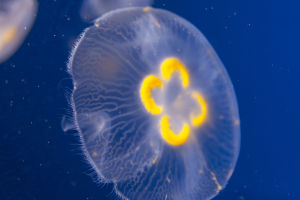Do you remember Nemo, the clownfish from the Disney animated film "Finding Nemo"? Despite the word "clown" in their name, clownfish are stunning. They are named for the white stripes on their heads, reminiscent of the makeup worn by clowns in Peking opera.
Clownfish are tropical marine fish, also known as anemonefish or damselfish, found in the Indian-Pacific region, the Red Sea, southern Japan, and Australia. They have petite bodies, typically reaching only around 11 centimeters in length.
White patches adorn their foreheads and upper sides, with their dorsal fins boasting 14 to 15 soft rays, mostly black except for transparent pectoral and soft dorsal fin rays. Juvenile clownfish sport black scales with blue accents, while adults are primarily vivid red with black-bordered white stripes encircling their eyes.
Clownfish commonly inhabit coral reefs and rocky outcrops. As juveniles, they often live symbiotically with anemones and sea urchins. Anemones secrete venom from their tentacles, but clownfish possess a special mucus that protects them from the toxins, enabling them to move freely among the anemones. Under the protection of anemones, clownfish avoid attacks from larger fish and utilize the anemones' tentacles for nesting and spawning.
Clownfish assist anemones by cleaning food debris, preventing it from falling into the anemone, and serving as a food source for the clownfish. Moreover, their presence attracts other fish to the anemone, providing it with opportunities for predation. Additionally, clownfish aid anemones in removing necrotic tissue and parasites. This close mutual relationship between clownfish and anemones is known as symbiosis.
Clownfish are highly territorial. Typically, a mated pair will occupy an anemone, excluding other clownfish. They may allow some juveniles to join if it's a giant anemone. In this family unit, the dominant female and her mate assert control, often suppressing other members to less significant corners of the anemone.
If the dominant female disappears, her mate becomes female over several weeks, acquiring female physiological functions before gradually altering external features such as body shape and color, eventually becoming the new dominant female. Another strong male in the group then becomes her new mate.
Clownfish also exhibit territorial solid behavior. Usually, a mated pair will occupy an anemone, not allowing other members of the same species to enter. They may only permit some juveniles to enter if it's a giant anemone. Within this family unit, the dominant female and her mate hold sway, actively suppressing other clownfish and driving them to the periphery of the anemone to defend their territory.
Thus, clownfish are far more complex than they appear. They carve out their niche in the vast ocean with their unique survival skills.


